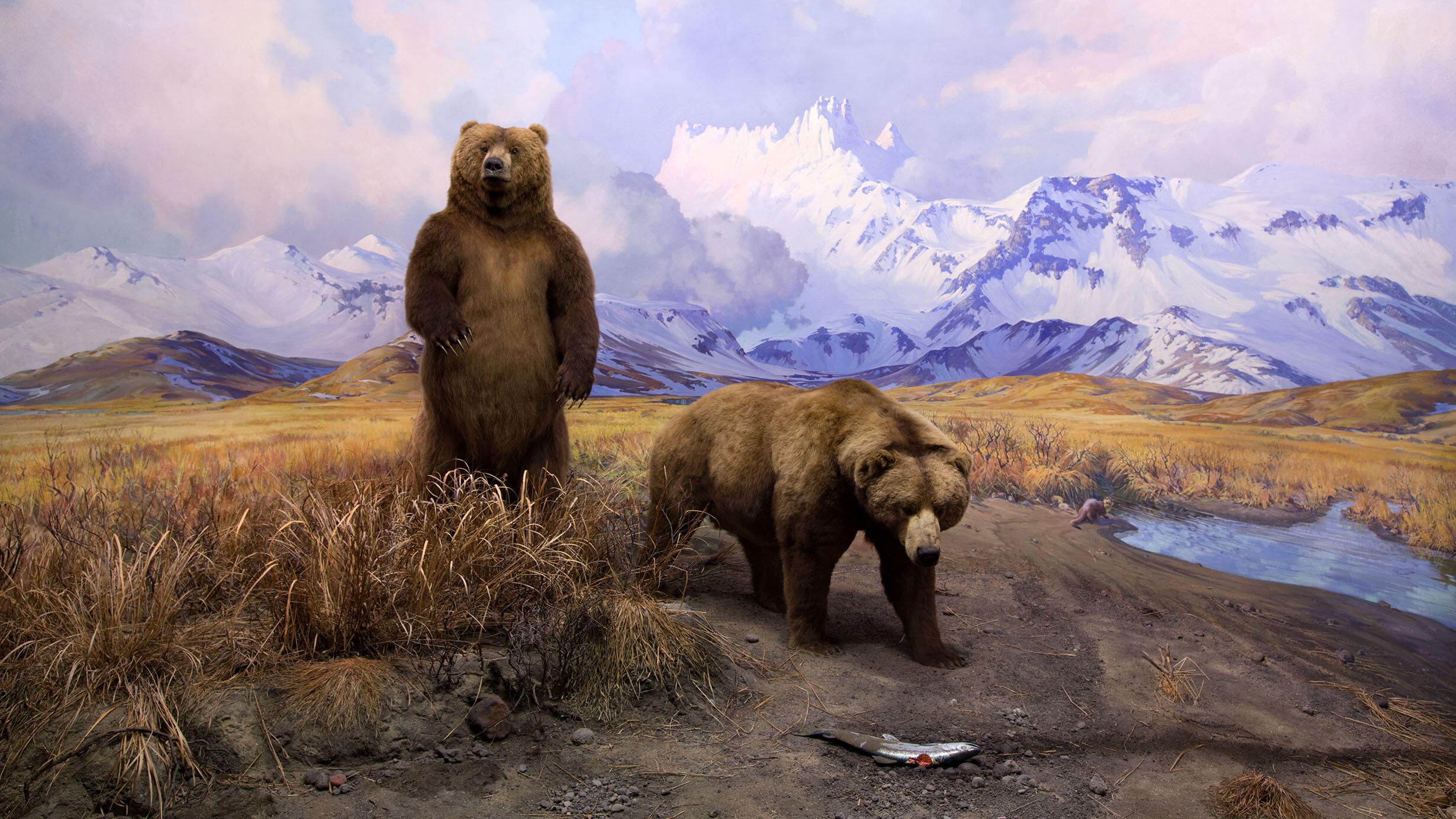Alaska Brown Bear
Part of Hall of North American Mammals.
 D. Finnin/© AMNH
D. Finnin/© AMNH Canoe Bay, Alaska Peninsula
Although brown bears don’t mingle much, these two have gathered at a stream near Canoe Bay, Alaska, lured by the first fish of the salmon run. The millions of salmon that swim upstream each summer are a huge boon for bears, helping them regain body mass after winter hibernation.
Thanks to nutrient-rich salmon, brown bears on the Alaska Peninsula coast and islands are the largest terrestrial carnivores today. Brown bears that live inland (such as the grizzly bears behind you) eat mainly plants—and can be half the size.
Bears and Salmon
Brown bears near the Gulf of Alaska reach huge sizes because of their nourishing salmon diet. Together, brown bears and salmon help support the riverside ecosystems they share.
Each summer, throngs of fish swim upriver, migrating from the ocean to reproduce in the same stream or lake where they were born. Carnivores like brown bears, river otters and eagles eat the spawning salmon. The carnivore droppings and fish carcasses transfer a tremendous amount of nutrients to plants and invertebrates, enriching the entire ecosystem.